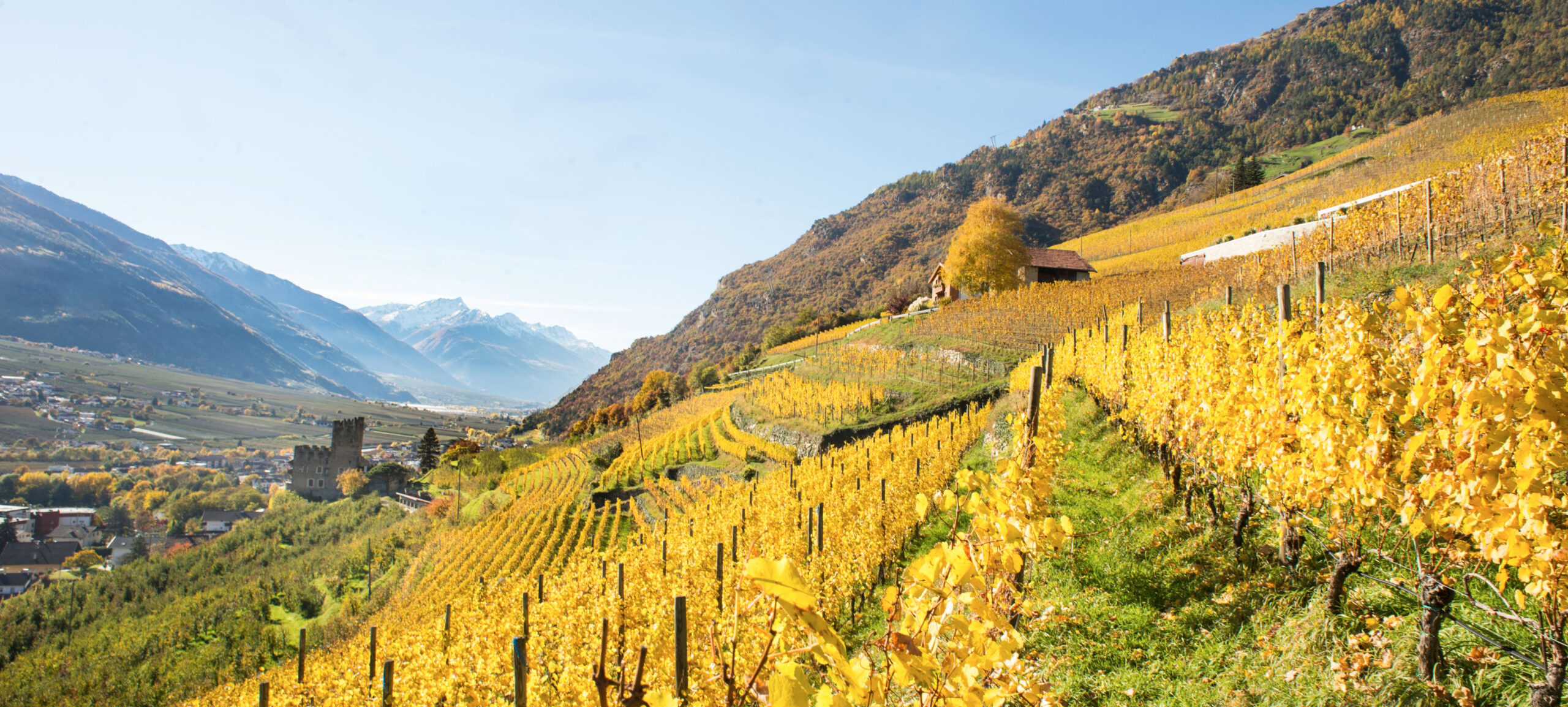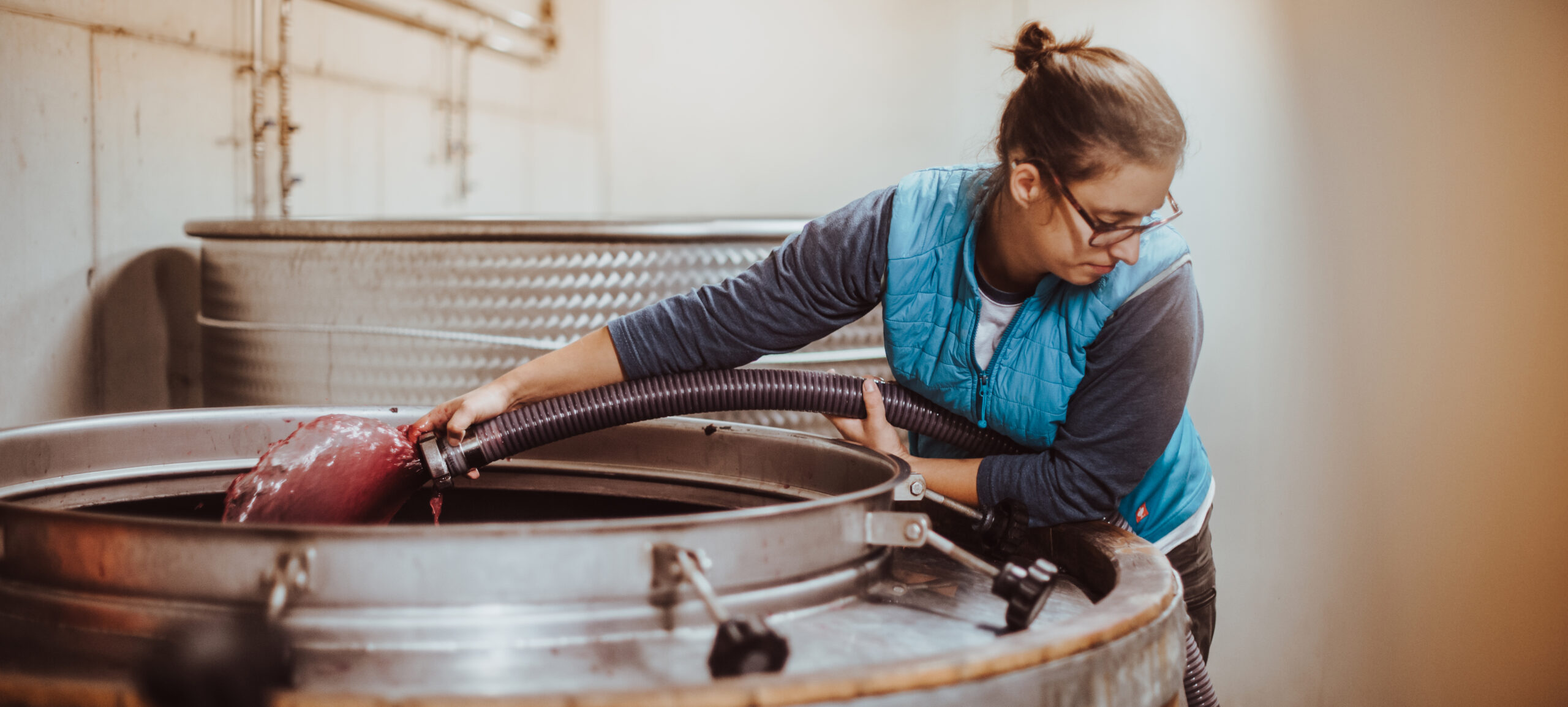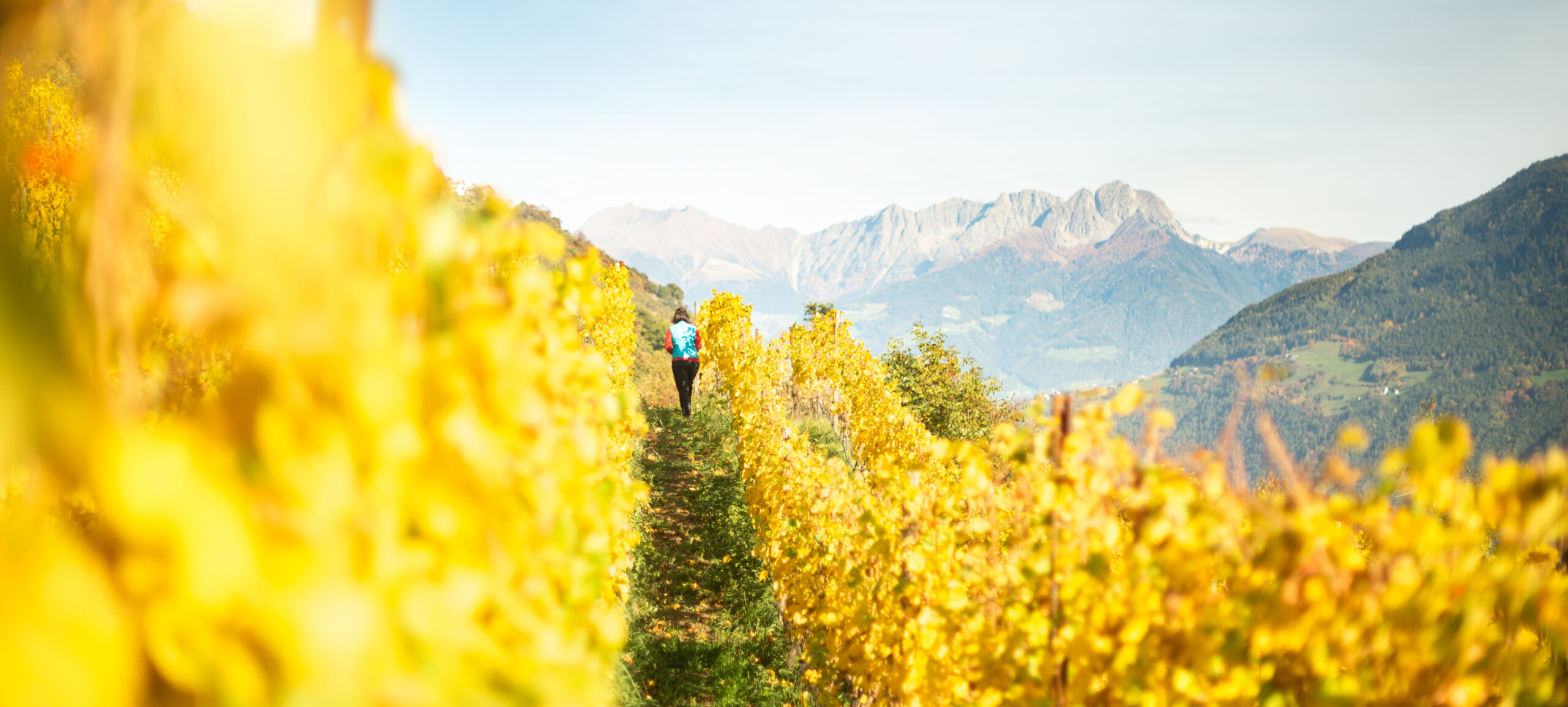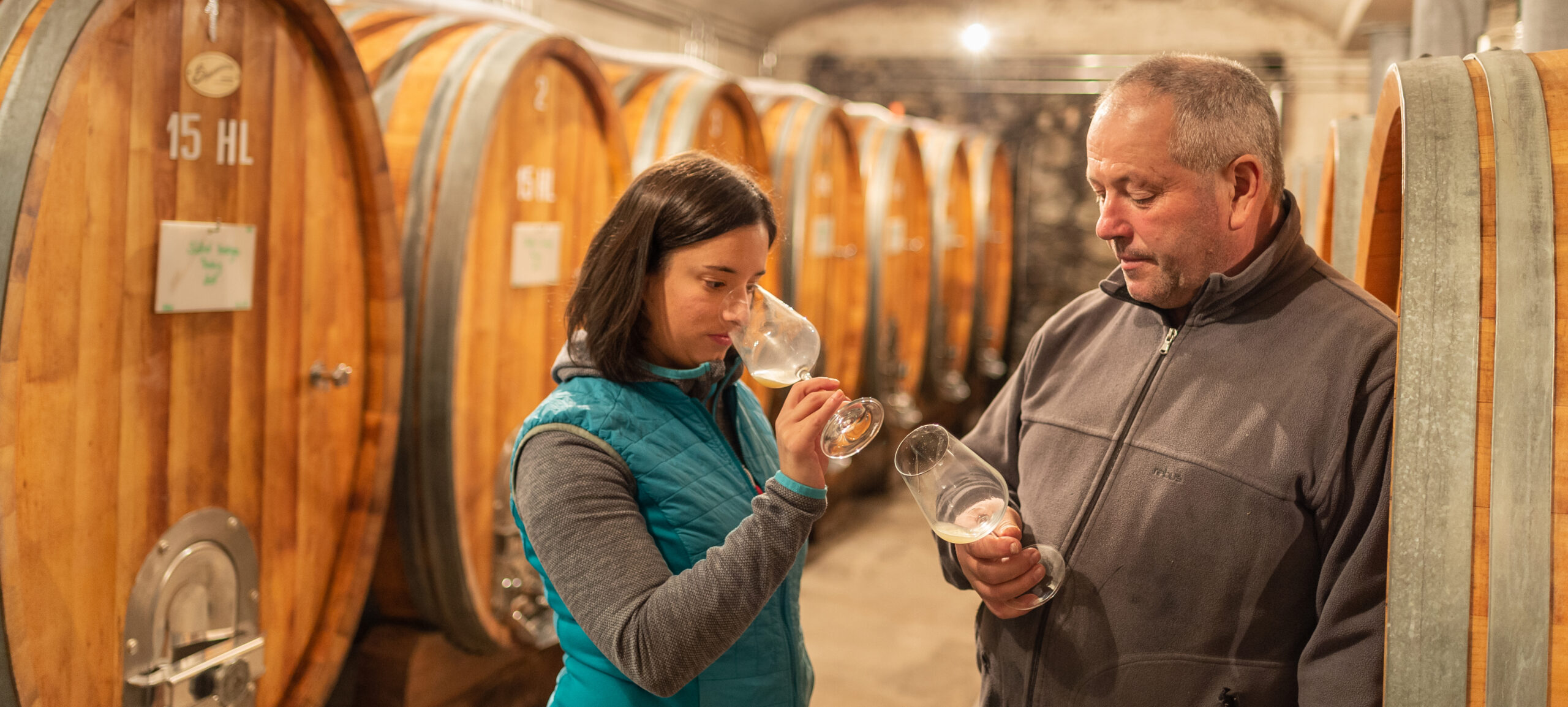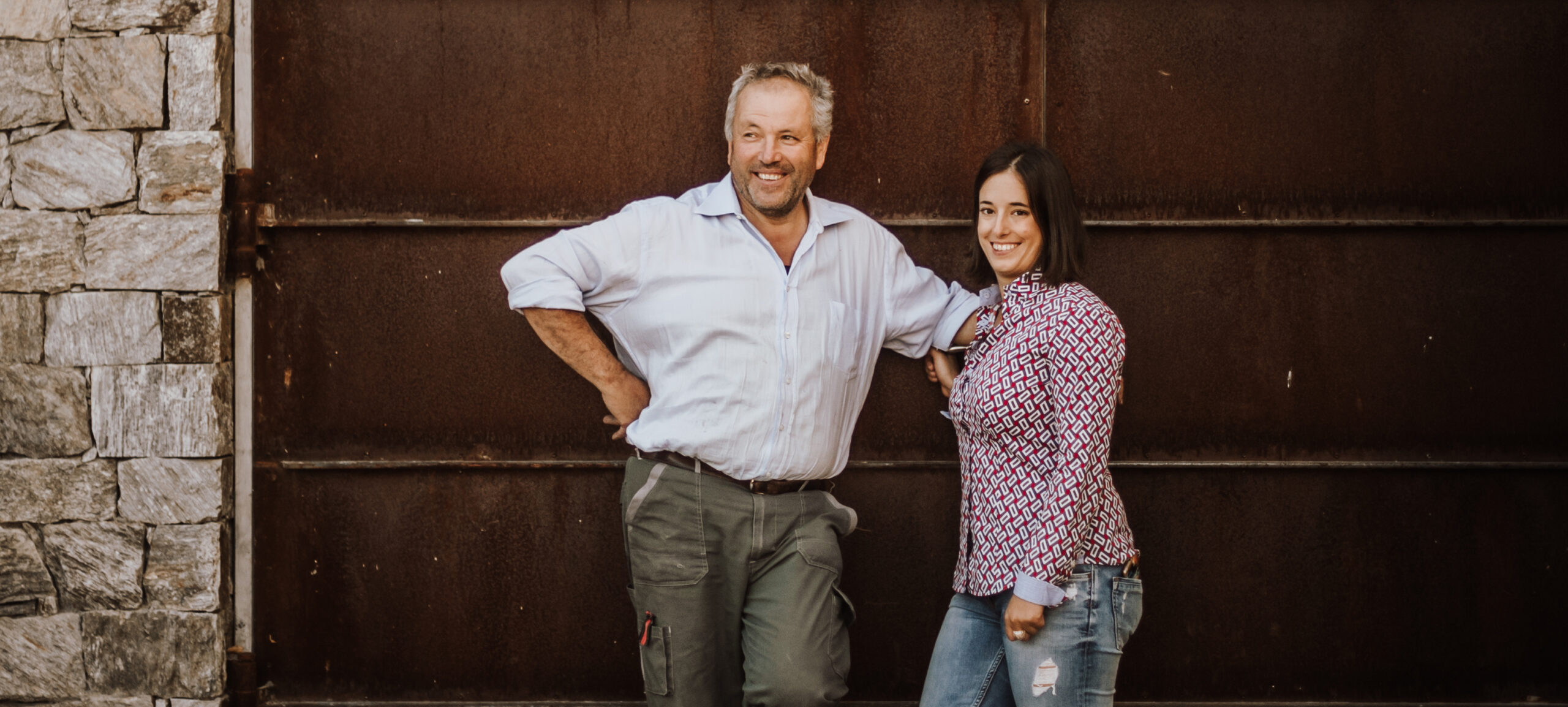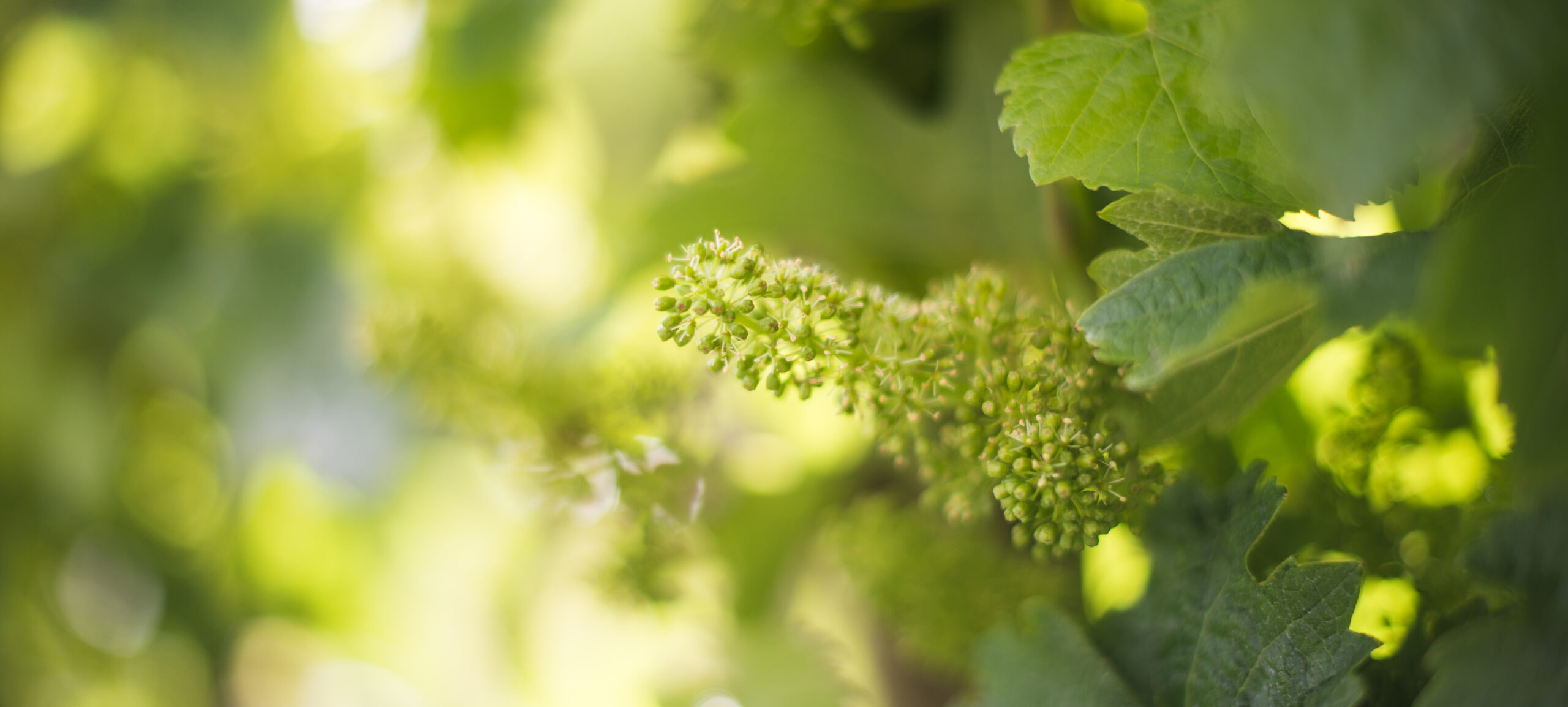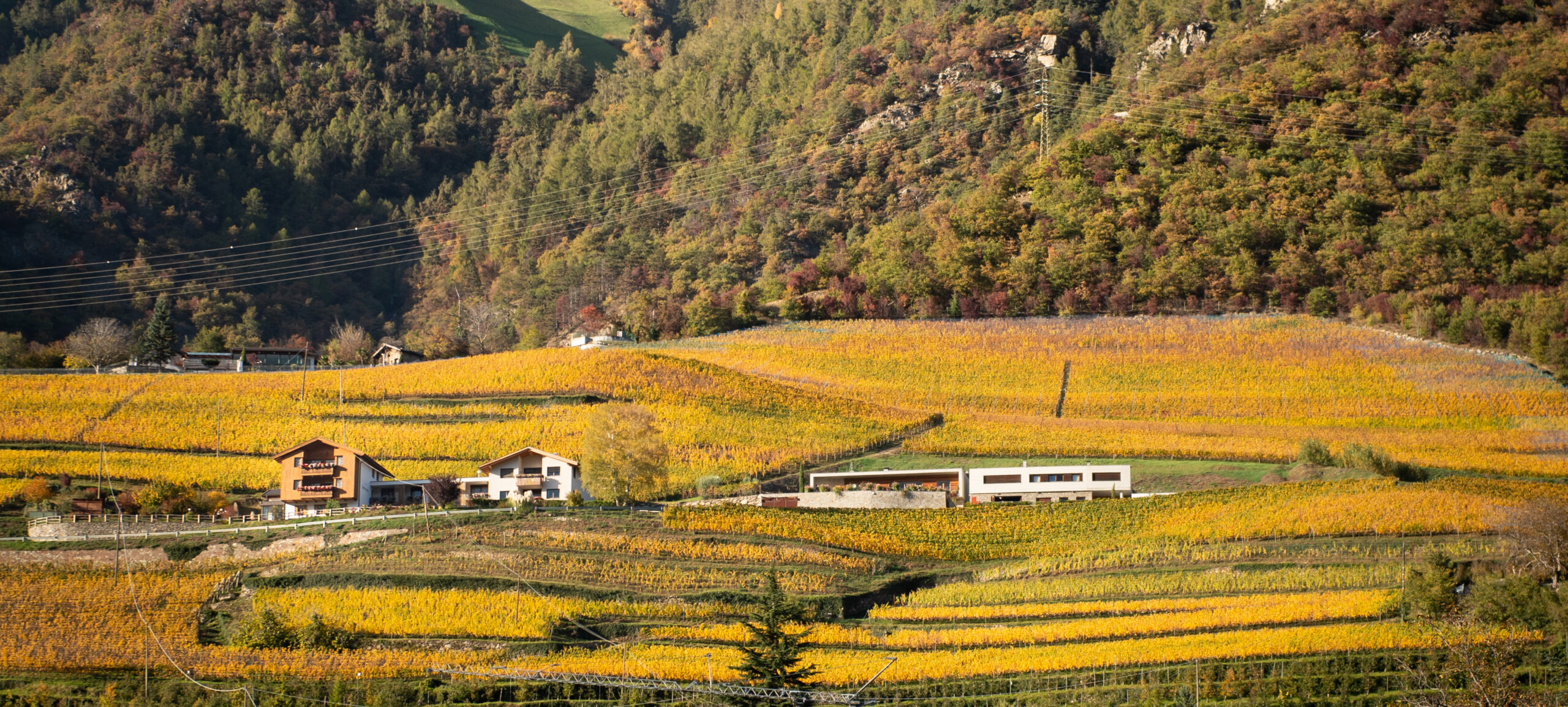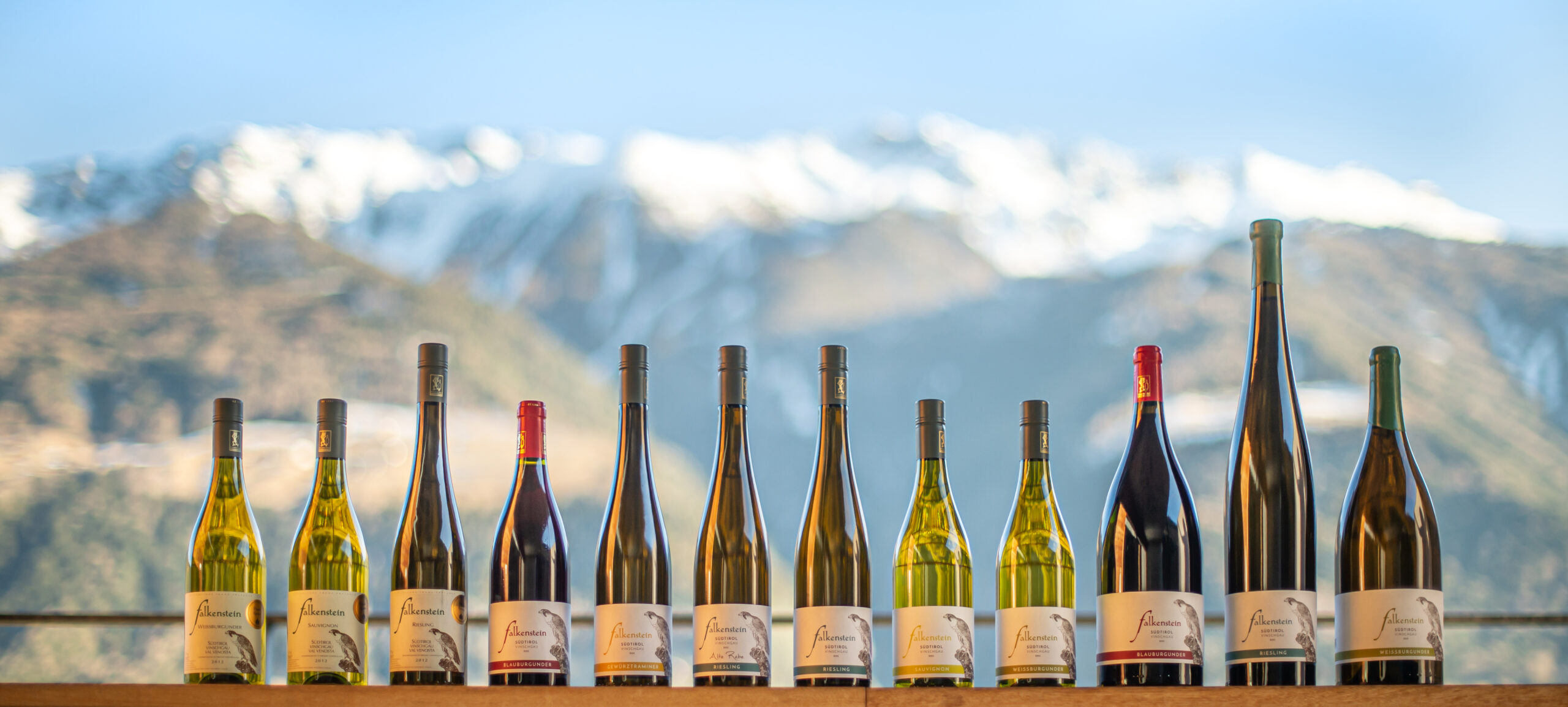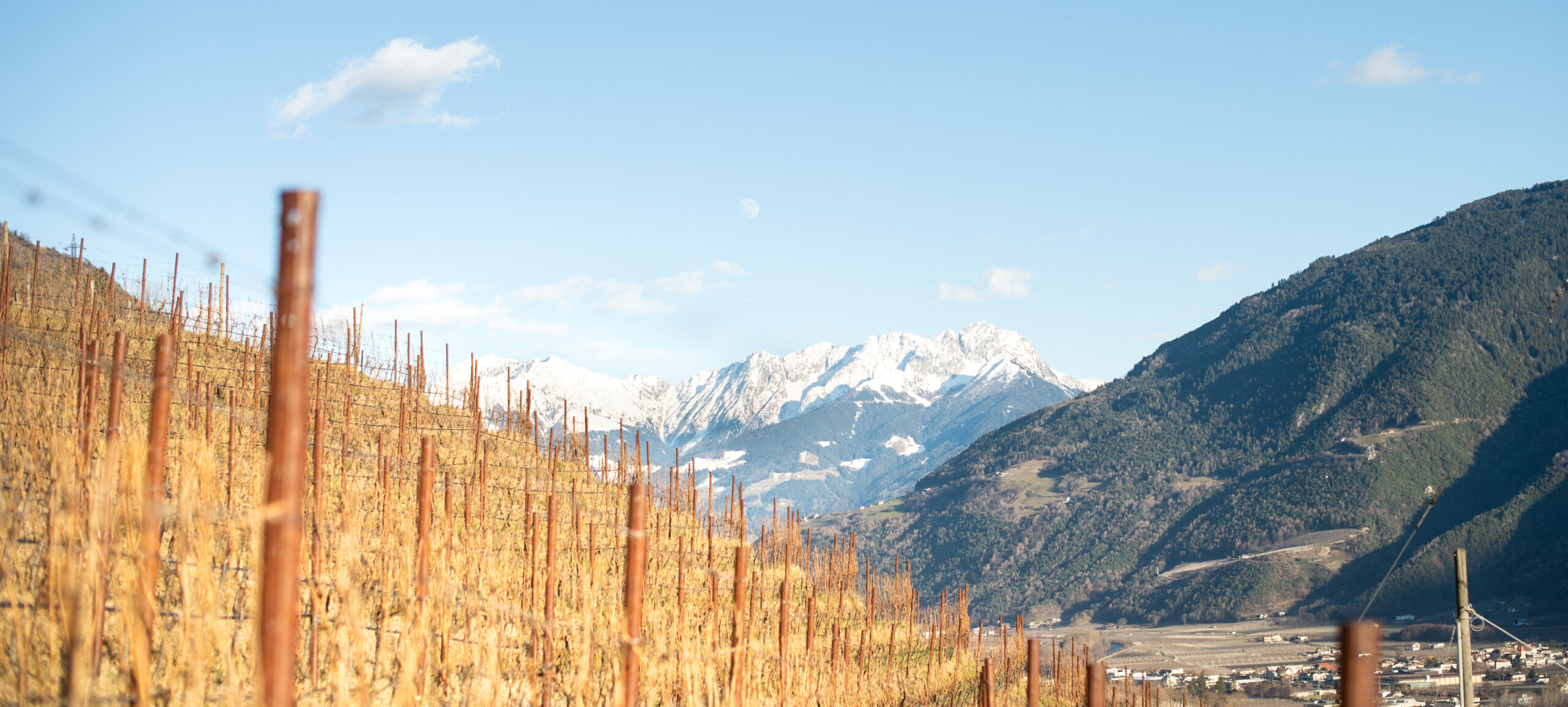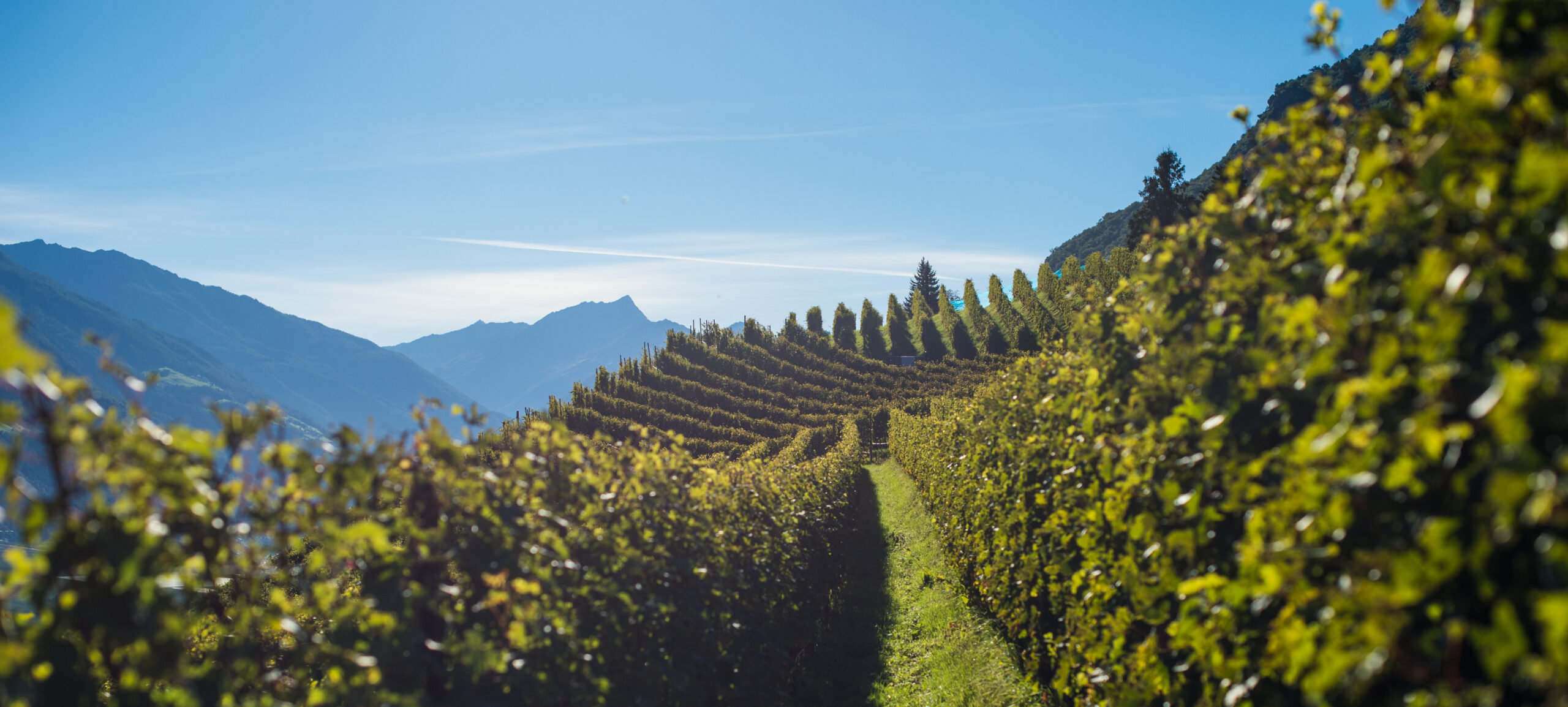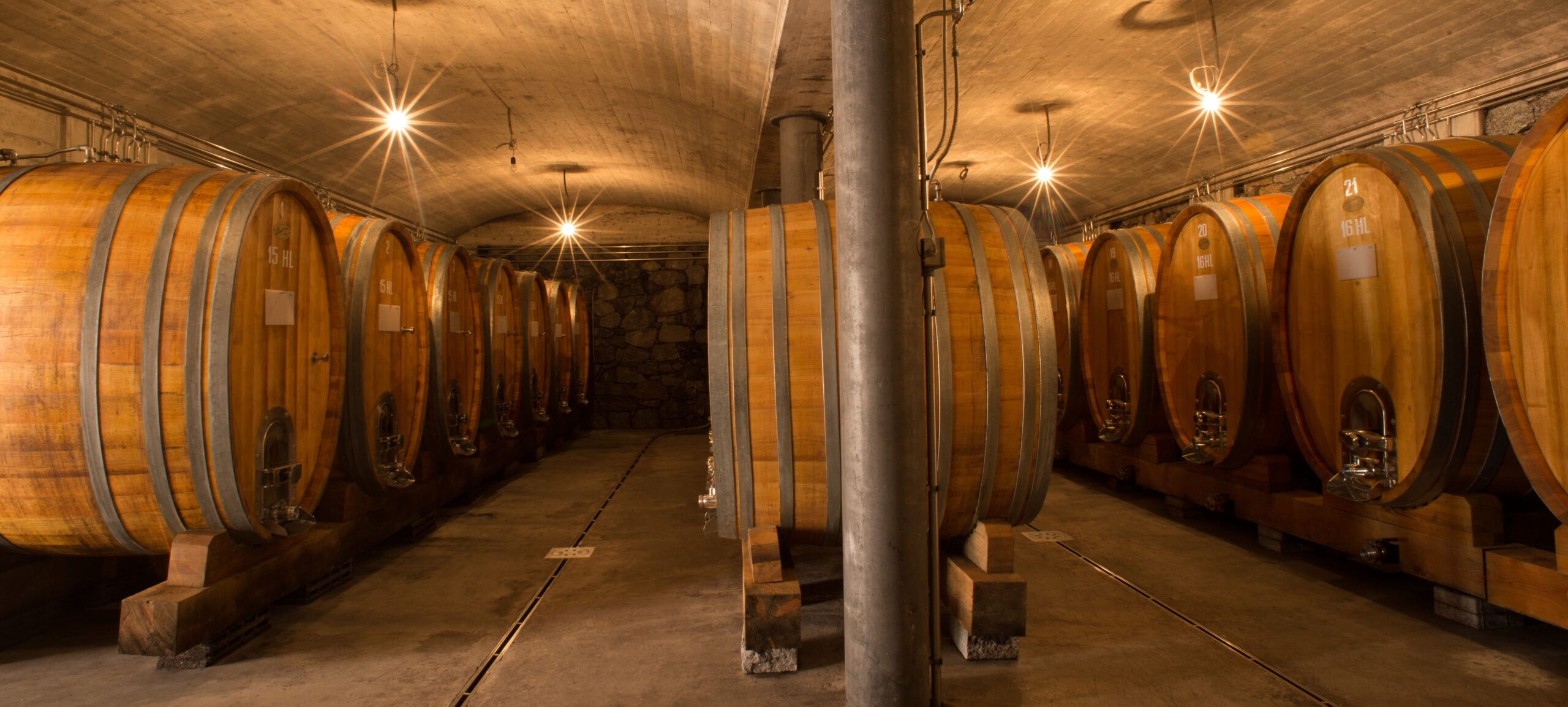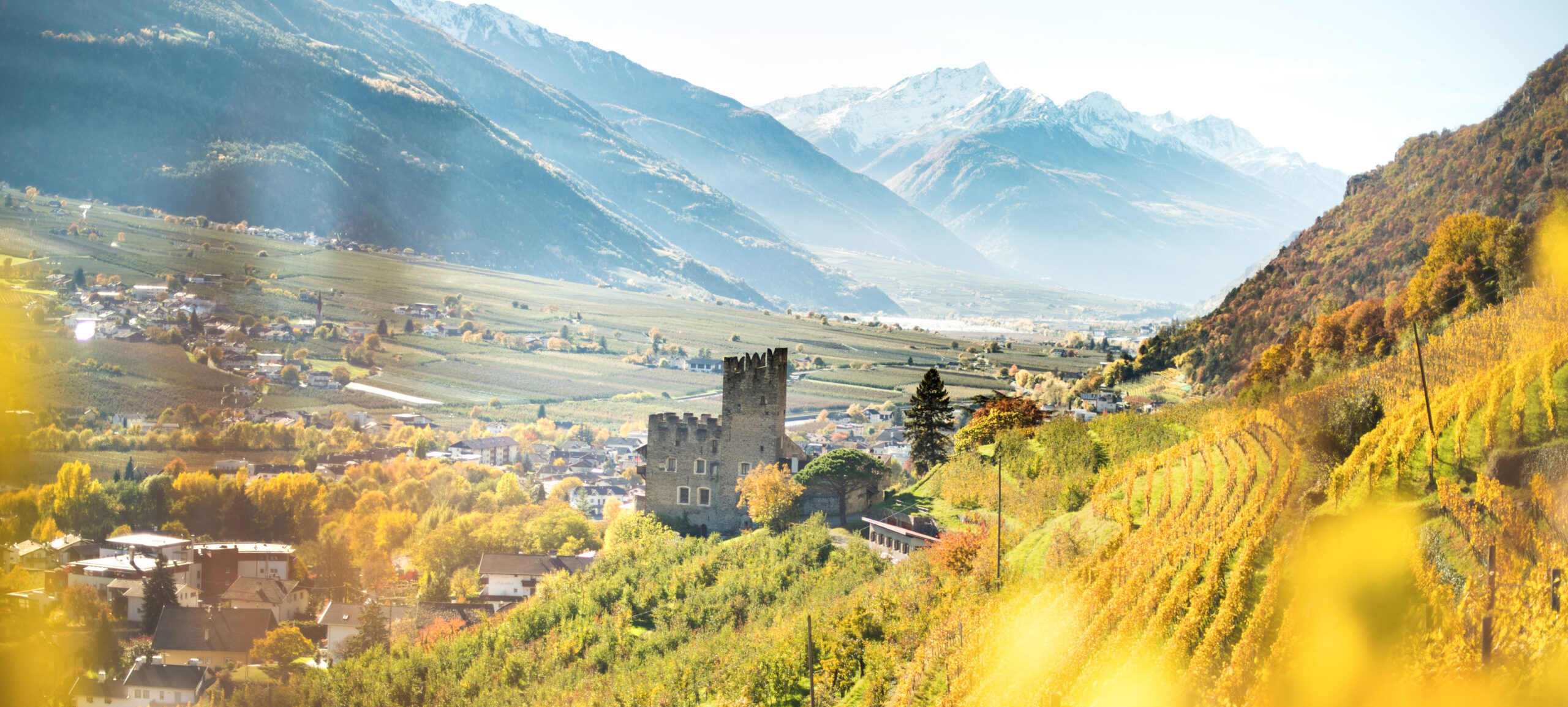The Falkenstein winery, located in the scenic Vinschgau, aka Val Venosta, is one of Italy’s greatest producers of Riesling. The estate’s name dates to the 12th century when it was a hunting house for the castle located just below them on the hill. The hunting was done traditionally with falconry, hence the image of the falcon on the estate’s labels.
Much of the valley floor of the Val Venosta is dedicated to apple orchards which was, for many years the Pratzner family’s main business. That is, until 1983, when Franz and his wife, Bernadette, began to make wine. Their first vintage was 1989 when they made just 600 bottles. It was not until the 1995 vintage that they bottled wine using the Alto Adige DOC.
The family business is split between a guesthouse run by Franz and Bernadette’s daughter, Michaela, and the winery, which their daughter, Magdalena, runs (though Franz is still very much involved). Their mother, Bernadette, locally known as a great chef, prepares meals at the guesthouse.
Today, the estate comprises fourteen hectares of vineyards which they work organically. In three of their vineyards, they also have begun working biodynamically. They have six hectares of Riesling, three of Pinot Bianco (aka Weissburgunder), and smaller amounts of Sauvignon, Gewurztraminer, and Pinot Noir. The winery and vineyards sit in the Alps just 5 miles south of the Austrian border. Most of their vineyards face south or southeast at approximately 600-900 meters and have beautiful views of mountain chains leading to Mt. Ortler, the tallest mountain in Alto Adige. The soil here is a mix of gneiss (similar to granite), slate, mica, and quartz and the wines reflect this in their minerality and structure. In this cool region nestled in the mountains, the wines are extremely fresh and vibrant. Their whites, for example, have a very low pH, usually no more than 2.95, and given that they are vinified dry, they are some of the finest examples of racy, mineral-driven Alpine wines!
Riesling makes up the largest part of their production, and include three separate bottlings, the main Estate Riesling, an old vine bottling called Alte Reben, plus a cru of Riesling aged in oak called Anaduron. They also make a delicious Weissburgunder (aka Pinot Blanc) as well as a super elegant Blauburgudner (aka Pinot Noir) made from Southwest-facing vineyards.
Given the natural approach in the vineyards as well as the rugged mountain terrain, everything here is hand-harvested. Fermentations for most wines take place in neutral Acacia casks and then are further aged in those casks. Unlike a lot of wines made in the Alto Adige that are released within a year after harvest, they feel the wines need time to harmonize, so the elevage is followed by usually at least six months in the bottle before release.
The resulting wines, whether the textured and chiseled whites, or the elegant, earth-infused reds, all reek of the dramatic mountainous terrain from which they are born. And in today’s world of warming temperatures and the bigger and richer wines that have arisen as a result, it is a pleasure to have wines that are beautifully moderated by their Alpine roots!
